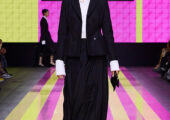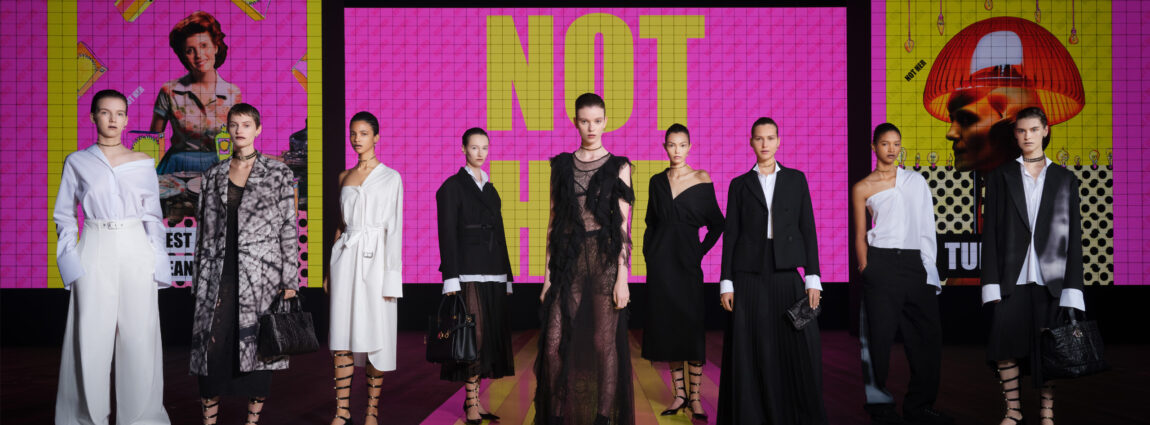Maria Grazia Chiuri, Creative Director of Dior women’s lines, dreamed up this spring-summer 2024 ready-to-wear collection starting from a reflection on the meaning of the present. A present in which past andfuture must coexist simultaneously.

In this convergency, open to many interpretations, she continues to explore the relationship between femininityand feminism, driven by the conviction that fashion has, more than ever, a responsibility to help women realizetheir worth and express their differences. She is therefore interested in all the rebels who have asserted theirindependence in the face of a masculine world and challenged its system.

These include witches, custodians of the knowledge of the mother-goddess, who pass on the science ofplants and respect the time of nature. Maria Grazia Chiuri’s creations for Dior reveal a medieval style, anarchitectural silhouette, where the jacket is of masculine mode. Certain fabrics bear witness to a materiality,a memory of time and an in-depth knowledge of the work of Italian artist Alberto Burri; tears, lacerationsand combustions become a constitutive, performative element of the garment. The colors are those ofash, chamomile and love potions. TheMille-fleurs,emblematic of Dior, is transformed into a dark motif, acontrasting floral X-ray. Phases of the moon, suns announcing the seasons, medicinal herbs and fantasticalanimals are all part of this iconic design, and of the embroidery also at times.Knitwear plays a tremendous role: it accompanies and caresses the curves of the body, enveloping withoutconstricting, it is warm, sexy. A very light, metallic sweater alludes to chainmail.

The monumental, immersiveNOT HERart piece, by Elena Bellantoni, perpetuates this refusal of all theclichés that confine women to predefined categories. The video installation, occupying all the walls of theshow’s scenography, uses the analog split-flap device: we see a succession of female figures (includingthe artist herself) reworked by Elena Bellantoni, in a pop spirit, using imagery from sexist adverts andcounterpoint phrases to respond to the dominant stereotype: “it’s not her, she’s no longer all that”.









Comments are off this post!